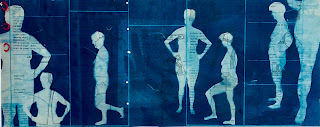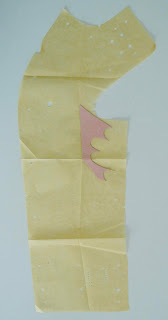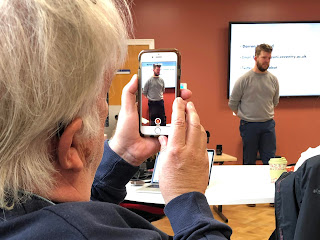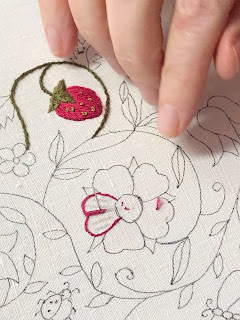I've referred to this book before, but new stuff leapt out at me this time. All quotes, not paraphrased.
'Feminism constantly questions the identifications of popular and high culture and their pleasures - of being the artist, the special and select, the refined sensibility or inspired or driven creator. p54
' Feminist practice entails a collective production of radically different views of the world, different kings of knowledge and accounts of experience and its determinations. ... [Along with] engagement with the issues of representation there is a need to be accessible to the world of women, who may be unfamiliar with feminist theories about the way representations operate in the subordination of women. p54
The only constructive strategy for women is to work to produce a different meaning for art, its producers, its audience, that is to align its social relations of production and use to radical political change. p59
The demand that the neglect of women artists be rectified - was adopted, but the demand that our entire conception of the artist and the discipline of art history be overhauled and transformed - was eschewed. p60
The notion of 'shared oppression' permitted the domination of white heterosexual middle-class definition of that oppression. Black women, lesbian women, working-class women, Jewish women were rightly claiming that their position in a racist and sexist society gave rise to quite specific forms of oppression p64
Structures of looking and especially pleasurable looking [scopophilia] have been identified and shown to establish meanings and gender positions for accepting those meanings. ...Dominance secures the masculine position, while the feminine is placed as the passive object of that gaze. How is it possible to make texts through which women's point of view can be articulated? p73
Feminist activity is the interface between fundamental feminist concerns to articlate women's meaning and the theorised understandings for meanings are secured in dominant art practices and theories. p74
'The ideological is the non--unitary complex of social practices and systems of representation which have political consequences. (Mary Kelly, 1977, Art & Politics conference, London) p81
'Feminist artistic practice can be effective - not by expressing some singular and personal set of ideas or experiences, but by calculated interventions (often utilising or addressing explicitly women's experiences ignored or obliterated in our culture). Therefore the study of feminist cultural practices leads to a series of tactical activities and strategically developed practices of representation which represent the world for a radically different order of knowledge of it ... in the context of established institutions and discourses with define limited of what is ratified as art. p81
'Ideology is - by means of social processes that we are produced as subjects, gendered and classed. Social practices and institutions which constitute who and what we are: the family, schooling, the church, advertising, cinema etc. p89
'Feminism is crucially a matter of
effect. To be feminist at all, work must be conceived within the framework of a structural, economic, political and ideological critique of the power relations of society and with a commitment to collective action for their radical transformation. ... It has a political effect in the way the work acts upon, makes demands of and produces positions for its viewers. It is feminist because of the way it works as a text within a specific social space in relation to dominant codes and conventions of art and to dominant ideologies of femininity. It is feminist when it subverts the normal ways in which we view art and are usually seduced into a complicity with the meanings of the dominant and oppressive culture. p93
'Post partum document. The relationship, the reciprocal activities, experiences ... cannot be pictured or directly represented.... Thus Post Partum Document attains to the level of document as evidence of proof. p97
'Reading a history from documents requires the active participation of the reader. Meaning is produced at the point of production by its viewers who ... come to recognise and understand femininity as social process, founded in historically specific social practices. p98






















